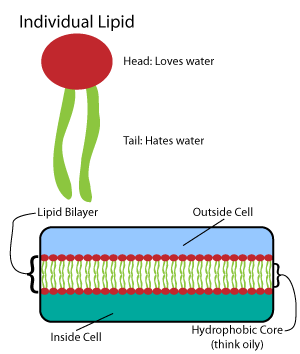|
6-pyruvoyltetrahydropterin
Dyspropterin (6-pyruvoyltetrahydropterin, 6-PTHB) is an intermediate in tetrahydrobiopterin biosynthesis Biosynthesis is a multi-step, enzyme-catalyzed process where substrates are converted into more complex products in living organisms. In biosynthesis, simple compounds are modified, converted into other compounds, or joined to form macromolecules. .... It is the product of the enzyme 6-pyruvoyltetrahydropterin synthase and the substrate of two enzymes, 6-pyruvoyltetrahydropterin 2'-reductase and sepiapterin reductase. Dyspropterin exists in all living organisms, ranging from bacteria to humans. Dyspropterin has been detected, but not quantified in, a few different foods, such as anatidaes (Anatidae), chickens (Gallus gallus), and domestic pigs (Sus scrofa domestica). This could make dyspropterin a potential biomarker for the consumption of these foods. See also * Tetrahydrobiopterin References Pteridines {{organic-compound-stub ... [...More Info...] [...Related Items...] OR: [Wikipedia] [Google] [Baidu] |
6-pyruvoyltetrahydropterin 2'-reductase
In enzymology, a 6-pyruvoyltetrahydropterin 2'-reductase () is an enzyme that catalyzes the chemical reaction :6-lactoyl-5,6,7,8-tetrahydropterin + NADP+ \rightleftharpoons 6-pyruvoyltetrahydropterin + NADPH + H+ Thus, the two substrates of this enzyme are 6-lactoyl-5,6,7,8-tetrahydropterin and NADP+, whereas its 3 products are 6-pyruvoyltetrahydropterin, NADPH, and H+. This enzyme belongs to the family of oxidoreductases, specifically those acting on the CH-OH group of donor with NAD+ or NADP+ as acceptor. The systematic name of this enzyme class is 6-lactoyl-5,6,7,8-tetrahydropterin:NADP+ 2'-oxidoreductase. Other names in common use include 6-pyruvoyltetrahydropterin reductase, 6PPH4(2'-oxo) reductase, 6-pyruvoyl tetrahydropterin (2'-oxo)reductase, 6-pyruvoyl-tetrahydropterin 2'-reductase, and pyruvoyl-tetrahydropterin reductase. This enzyme participates in folate biosynthesis Folate, also known as vitamin B9 and folacin, is one of the B vitamins. Manufactured folic ... [...More Info...] [...Related Items...] OR: [Wikipedia] [Google] [Baidu] |
Tetrahydrobiopterin
Tetrahydrobiopterin (BH4, THB), also known as sapropterin (INN), is a cofactor of the three aromatic amino acid hydroxylase enzymes, used in the degradation of amino acid phenylalanine and in the biosynthesis of the neurotransmitters serotonin (5-hydroxytryptamine, 5-HT), melatonin, dopamine, norepinephrine (noradrenaline), epinephrine (adrenaline), and is a cofactor for the production of nitric oxide (NO) by the nitric oxide synthases. Chemically, its structure is that of a (dihydropteridine reductase) reduced pteridine derivative (quinonoid dihydrobiopterin). Medical use Tetrahydrobiopterin is available as a tablet for oral administration in the form of ''sapropterin dihydrochloride'' (BH4*2HCL). It was approved for use in the United States as a tablet in December 2007 and as a powder in December 2013. It was approved for use in the European Union in December 2008, Canada in April 2010, and Japan in July 2008. It is sold under the brand names Kuvan and Biopten. The typ ... [...More Info...] [...Related Items...] OR: [Wikipedia] [Google] [Baidu] |
Biosynthesis
Biosynthesis is a multi-step, enzyme- catalyzed process where substrates are converted into more complex products in living organisms. In biosynthesis, simple compounds are modified, converted into other compounds, or joined to form macromolecules. This process often consists of metabolic pathways. Some of these biosynthetic pathways are located within a single cellular organelle, while others involve enzymes that are located within multiple cellular organelles. Examples of these biosynthetic pathways include the production of lipid membrane components and nucleotides. Biosynthesis is usually synonymous with anabolism. The prerequisite elements for biosynthesis include: precursor compounds, chemical energy (e.g. ATP), and catalytic enzymes which may require coenzymes (e.g. NADH, NADPH). These elements create monomers, the building blocks for macromolecules. Some important biological macromolecules include: proteins, which are composed of amino acid monomers joined via pe ... [...More Info...] [...Related Items...] OR: [Wikipedia] [Google] [Baidu] |
Sepiapterin Reductase
Sepiapterin reductase is an enzyme that in humans is encoded by the ''SPR'' gene. Function Sepiapterin reductase (7,8-dihydrobiopterin:NADP+ oxidoreductase; EC 1.1.1.153) catalyzes the NADPH-dependent reduction of various carbonyl substances, including derivatives of pteridines, and belongs to a group of enzymes called aldo-keto reductases. SPR plays an important role in the biosynthesis of tetrahydrobiopterin. Reaction Sepiapterin reductase (SPR) catalyzes the chemical reaction L-erythro-7,8-dihydrobiopterin + NADP+ \rightleftharpoons sepiapterin + NADPH + H+ Thus, the two substrates of this enzyme are L-erythro-7,8-dihydrobiopterin and NADP+, whereas its three products are sepiapterin, NADPH, and a single hydrogen ion (H+). This enzyme belongs to the family of oxidoreductases, to be specific, those acting on the CH-OH group of donor with NAD+ or NADP+ as acceptor. The systematic name of this enzyme class is 7,8-dihydrobiopterin:NADP+ oxidoreductase. This enzyme ... [...More Info...] [...Related Items...] OR: [Wikipedia] [Google] [Baidu] |
